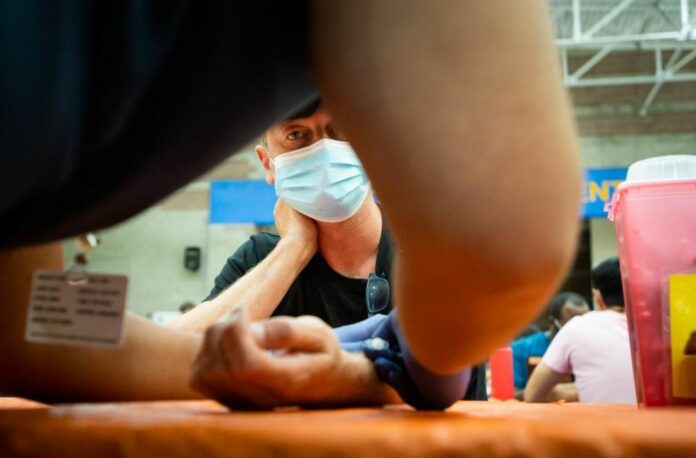The transmission was found four days before symptoms started to show up. The results could have big effects on how the world fights infections.
A new study published today in The BMJ revealed evidence for “substantial” monkeypox transmission before symptoms develop or are diagnosed (known as pre-symptomatic transmission).
The team found that transmission could be identified up to four days before the onset of symptoms, and they estimate that more than half (53%) of transmission took place in this pre-symptomatic phase. This means that many infections cannot be prevented by requesting that people isolate once they begin to exhibit symptoms.
In the linked editorial, experts state that if these findings are verified by more research, pre-symptomatic transmission “would have important implications for infection control globally.”
Over 70,000 cases have been reported globally since the monkeypox outbreak began in May 2022, with more than 28,000 in the US and around 3,500 cases in the UK.
Although case numbers are already dropping, it is still critical to understand the virus’s “transmission dynamics,” such as how it travels from person to person and how soon symptoms manifest, to help drive policy decisions and future actions.
Although earlier studies on pox viruses did not completely rule out transmission before symptoms appeared, this work provides the first evidence in favor of it.
To learn more about this, scientists at the UK Health Security Agency set out to study how the monkeypox outbreak in the UK spread.
Their conclusions are based on contact tracing information for 2,746 people who tested positive for monkeypox virus in the UK between 6 May and 1 August 2022, as well as routine surveillance data. They were 38 years old on average, and 95% of them identified as gay, bisexual, or males who have sex with men.
The two main measurements that the researchers were most interested in were the serial interval (the time from when the first case patient started having symptoms to when the second contact started having symptoms) and the incubation period (time from exposure to onset of symptoms).
To figure this out, they used contact tracing case questionnaires to link information about exposure and symptom onset dates from these people to their contacts. They then used two statistical models to look at this information.
The models were modified to account for several biases associated with virus outbreaks, such as variations in infection rates over time, which could have a negative impact on the outcomes.
In one model, the estimated mean incubation period was 7.6 days and in the other, it was 7.8 days. In one model, the estimated mean serial interval was 8 days and in the other, it was 9.5 days.
The median serial interval for both models was between 0.3 and 1.7 days shorter than the median incubation time, suggesting that significant transmission is taking place before symptoms are noticed or manifest.
This explanation seemed to be supported by an analysis of individual-level patient data from a subset of patients with more detailed information. Ten out of thirteen pairs of case-contact patients reported pre-symptomatic transmission. The longest duration between transmission and the onset of symptoms was four days.
According to these findings, the researchers estimate that a 16–23 day isolation period would be necessary to identify 95% of those who may have an illness.
These are findings based on observations, and the researchers point out a few challenges. For example, they had to rely on contact tracing to find the right case-contact pairs, and they had to use self-reported data on when symptoms started. Also, the results may not be directly applicable to other populations if they have different ways of spreading the disease.
Still, this was a large study that used strong methods and took into account key biases in the data. This gives us more confidence in the conclusions.
According to the researchers, these findings have significant implications for policies regarding contact tracing and isolation, and backward contact tracing strategies (tracing the source of a disease’s spread) should take a pre-symptomatic infectious period into account when trying to identify contacts of confirmed cases.
Source:10.1136/bmj-2022-073153
Image Credit: Sarah Reingewirtz/MediaNews Group/Los Angeles Daily News via Getty Images
